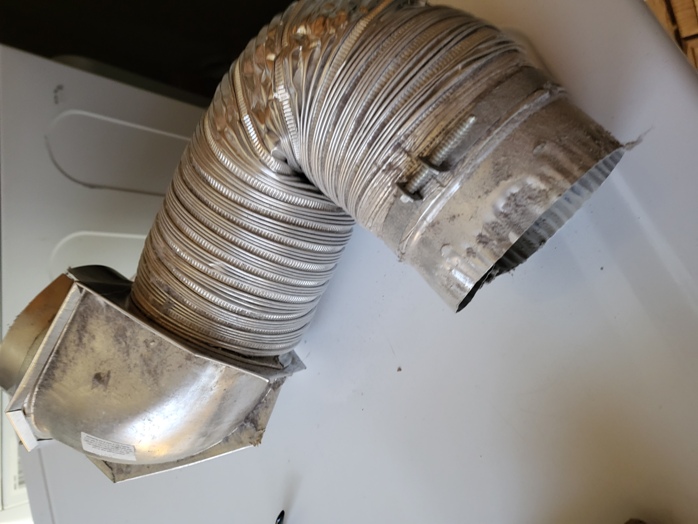Crucial Tips for Dryer Duct San Jose Homeowners
Crucial Tips for Dryer Duct San Jose Homeowners
Blog Article
Tips for Effectively Cleaning Your Clothes Dryer Ducts to Prevent Fire Dangers
Keeping the tidiness of your garments dryer air ducts is not merely a matter of performance; it is an essential step in fire avoidance. What are the most effective techniques to guarantee your dryer continues to be risk-free and efficient?
Relevance of Cleaning Clothes Dryer Ducts
Regularly cleansing clothes dryer air ducts is important for both safety and performance in laundry procedures. Over time, particles and dust build up within the ducts, obstructing airflow and enhancing the risk of overheating. This accumulation not only results in much longer drying out times yet can additionally substantially raise energy usage, resulting in greater utility bills.
When dryer ducts continue to be uncleaned, the home appliance should function harder to remove dampness from garments, which can cause early damage on the clothes dryer itself - dryer duct san jose. In the worst-case circumstance, clogged ducts can fire up a fire, presenting serious safety risks to homes and individuals
Furthermore, maintaining tidy dryer air ducts adds to a healthier indoor environment. Excess moisture from ineffective drying can result in mold and mildew and mold development, impacting air quality and potentially triggering respiratory system problems.
Eventually, regular cleansing of dryer air ducts is a financial investment in both the safety and security of your home and the functional efficiency of your washing appliances. Developing a routine cleansing timetable, together with specialist assessments, can make certain that your clothes dryer operates ideally, consequently prolonging its life expectancy and reducing the danger of fire hazards.

Signs of Clogged Ducts
Recognizing the indications of clogged up clothes dryer air ducts is essential for preventing security dangers and keeping device effectiveness. One of one of the most popular signs of an obstruction is prolonged drying times. If clothes regularly require numerous cycles to come to be dry, it might suggest that air can not distribute correctly because of lint accumulation.
One more indicator is an overheated dryer. If the outside of the dryer feels exceedingly warm during operation, it recommends that the air duct might be blocked, causing hazardous problems. Furthermore, an obvious increase in lint accumulation around the dryer or on clothing after drying out can aim to insufficient airing vent and demands immediate interest.
Undesirable odors, such as a burnt scent, can also signal that the clothes dryer is battling to get rid of warm air, suggesting a potential fire danger. If the dryer air vent hood does not open during operation, this can indicate that air flow is substantially limited.
Finally, any uncommon noises-- such as rattling or banging-- could signify that dust or debris is causing blockage within the air duct. Acknowledging and dealing with these indicators beforehand can aid ensure the effective and secure procedure of your clothes dryer.

Tools Needed for Cleaning
To properly clean clothes dryer ducts, having the right devices available is crucial for guaranteeing a effective and detailed procedure. The key tool you will certainly require is a dryer vent cleansing brush, which is especially designed to reach into the ductwork and remove dust buildup. These brushes typically have a flexible shaft that permits you to navigate bends and kips down the duct.
In addition to the brush, a vacuum cleaner with a pipe attachment is vital for sucking out loose lint and debris. A wet/dry vacuum is excellent, as it can manage bigger clumps of lint effectively. A flashlight can also confirm useful, as it helps illuminate dark areas within the air duct, permitting you to evaluate the degree of the build-up.
For those that choose a more automated approach, a clothes dryer vent cleaning set that attaches to a power drill can expedite the cleaning procedure. dryer duct san jose. Handwear covers and a dirt mask are advised to secure your hands and lungs from dust and allergens. Having these devices readily offered will guarantee that your clothes dryer duct cleansing is both effective and risk-free, decreasing the risk of fire hazards linked with obstructions
Step-by-Step Cleansing Process
Completing a successful dryer duct cleansing requires mindful attention to detail and adherence to a systematic procedure. Begin by detaching the clothes dryer from its source of power to guarantee safety throughout the cleansing. Next off, get rid of the air duct from the clothes dryer and the wall surface air vent, utilizing a screwdriver if required.
Once the air duct is removed, check it for any visible lint buildup or clogs. Use a vacuum with an appropriate add-on to eliminate loosened debris from both the duct and air vent. For stubborn obstructions, use a brush particularly developed for dryer air ducts, making sure that you get to deep into the ductwork.
Reattach the duct firmly to both the clothes dryer and wall surface vent, making certain all links are limited to prevent leakages. By following this step-by-step process, you will considerably minimize the threat of fire hazards connected with clogged up dryer air ducts, advertising a much safer washing setting.

Preventive Maintenance Tips
Maintaining your clothes dryer air ducts is necessary to avoid costly repairs and ensure optimal performance. Routine precautionary upkeep can considerably lower the danger of fire threats and enhance power effectiveness.
First, view it evaluate your dryer air ducts regular monthly for any noticeable lint build-up or damages. If you see a build-up of dust, timetable a complete cleaning. Furthermore, consider utilizing a lint catch with an incorporated filter to capture more dust prior to it gets in the ducts.
Following, guarantee that the airing vent system is effectively installed and devoid of twists or bends that can restrain airflow. Straight, unhampered ductwork my blog allows for effective operation and lessens the threat of lint accumulation.
Every 6 months, consider hiring a specialist service to carry out a thorough cleaning of your clothes dryer air ducts. Professionals have specialized devices and competence to remove hidden lint and debris that can posture major fire risks.
Lastly, always review and follow the manufacturer's guidelines for both your clothes dryer and the venting system. Sticking to these standards can help prolong the life of your device and guarantee it runs safely and effectively. Normal precautionary maintenance is vital to a reliable and secure laundry setting.
Verdict

Having these tools More about the author easily available will make certain that your clothes dryer duct cleansing is both risk-free and reliable, minimizing the danger of fire dangers linked with clogs.
Finishing a successful dryer air duct cleaning calls for careful focus to detail and adherence to a methodical procedure. Reattach the air duct securely to both the clothes dryer and wall surface vent, ensuring all connections are limited to prevent leaks. dryer duct san jose.First, evaluate your dryer air ducts month-to-month for any kind of noticeable dust accumulation or damage.Normal cleansing of garments dryer ducts is vital for fire danger prevention and optimal appliance effectiveness
Report this page